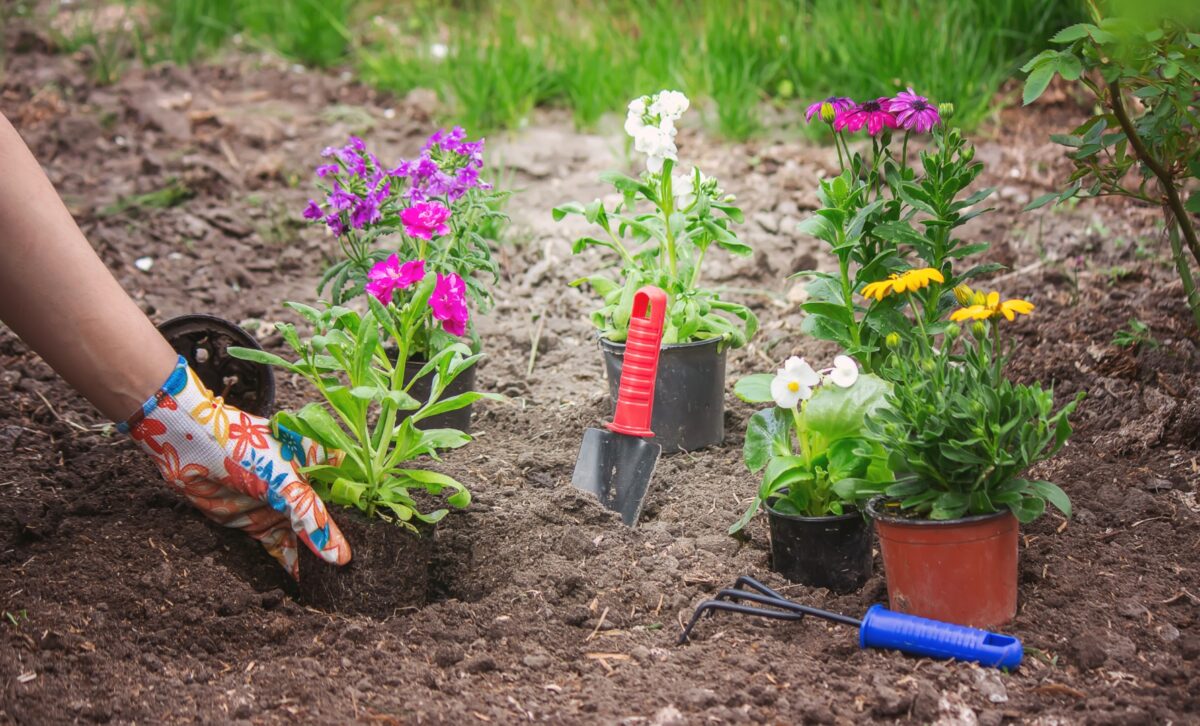Best Tips for Keeping Your Flowerbed Healthy and Vibrant All Summer Long

Posted on March 28, 2023 by Jeremiah Sooter
Maintaining a beautiful flowerbed doesn’t have to be complicated. Here are the best tips for keeping your flowerbeds looking fantastic all summer long.
Top Flowerbed Ideas in the Four States
Many homeowners in Southwest Missouri take great pride in nurturing a beautiful pristine yard, creating model flowerbeds that are magazine worthy. Gardens like that take an extraordinary amount of love and time to nurture into an amazing display for everyone to enjoy.
Most flowerbeds that don the pages of garden magazines took years to take shape. So, before beginning a task, remember the vision you wish to achieve for your flowerbeds. Establish goals and devise a plan of action for each phase of your flowerbed, whether you want to focus on:
- Seasonal changes
- Creating wildlife habitat
- Perennial flowerbeds
- Annual colors
- Xeriscaped flowerbeds (native plants)
The most peaceful outdoor oasis won’t happen overnight. However, with patience, planning, and due diligence, it is possible to have that picturesque garden. In today’s blog, we’ll give you tips on how to start, nurture, and feed your flowerbeds so they are healthy and vibrant all summer.
Best Maintenance Tips
Most homeowners will tell you they have lofty hopes for having stunning flowerbed displays in their yards. But getting there can be daunting. Here are our best maintenance tips for keeping flowerbeds thriving.
- Start small, then expand
- Watering flowerbeds is a daily task
- Weed, prune, and trim
- Fertilize, mulch, and compost
Start Small
Each region of the United States has plant life that will flourish. To begin, select plants that are native to the four-state region. It’s always a good idea to start small and grow a flowerbed or add new flowerbeds year after year.
Planting native plants is the perfect way to achieve a gorgeous garden without breaking the bank. These plants can spread and fill any space beautifully with time and little effort.
Bulb plants and flowers that return year after year are the easiest to care for and maintain. Start with just a few plants, leaving plenty of space to add more as the seasons change gradually. The best results for first-time flowerbeds are perennials.
But here are some things you should consider whether you live in Arkansas, Kansas, Missouri, or Oklahoma. How much rain does your region get? Is the soil sandy or more clay-like? Do you get an abundance of pollinators, like birds and insects, in your area?
You’ll be better prepared for flowerbed maintenance by getting the answers to these questions.
Watering Your Flowerbeds Daily
Most outdoor flowerbeds require water daily, so if it rains, it can help save your water bill during those hot summer months. But if you opt for xeriscape, you may save even more on your water bill, having only to water once weekly or if the soil begins to appear dry.
Weed, Prune, and Trim
In the first several months, your native flowerbeds require more weeding, pruning, and trimming. By clearing your flowerbed of weeds and dieback, you’re creating the space for healthy plants and flowers to spread out and thrive.
If weeds are left unchecked, your beautiful flowers may get choked out. As you’ll soon discover, flowerbeds are a labor of love, and one person’s weeds may be another persons ornamental plants.
You can readily block and train flowers or plants to grow upwards onto fences, trellises, or other structures. But those climbing plants need regular pruning and trimming to train. Plants or flowers trained to grow upward can add a vertical look and appeal to your flowerbed.
Rather than filling in every space in a flowerbed, it’s better to allow it to take on a natural appearance by filling in over several years. So while you wait on your flowerbeds to mature, don’t forget to help your plants with other necessities, like:
- Retaining moisture
- Nutrient supplements
Compost, Fertilize, and Mulch
To encourage continued growth, you can use nitrogen fertilizer or compost. Although, take care to use only a little fertilizer or compost that is not overly concentrated with nutrients, or you could risk burning a plant’s roots.
Mulches are an excellent way to retain ground moisture. There are several excellent choices for mulches to use:
- Cypress
- Pine needles
- Tree bark
Avoid using recycled rubber or repurposed wood pallets since these are ineffective at retaining ground moisture.
Looking For Help With Maintaining A Missouri Native Garden
Whether you’re just getting started with your first flowerbed, you can always hire the experts at Ground UP Services to help with design and installation. Their team of landscaping professionals can help you get started and provide you with consultation all year round. Call Ground Up Services at (417) 439-1009 to schedule your service appointment today!
With over 15 years of experience, the team at Ground Up Services can also assist you with these additional property maintenance services: